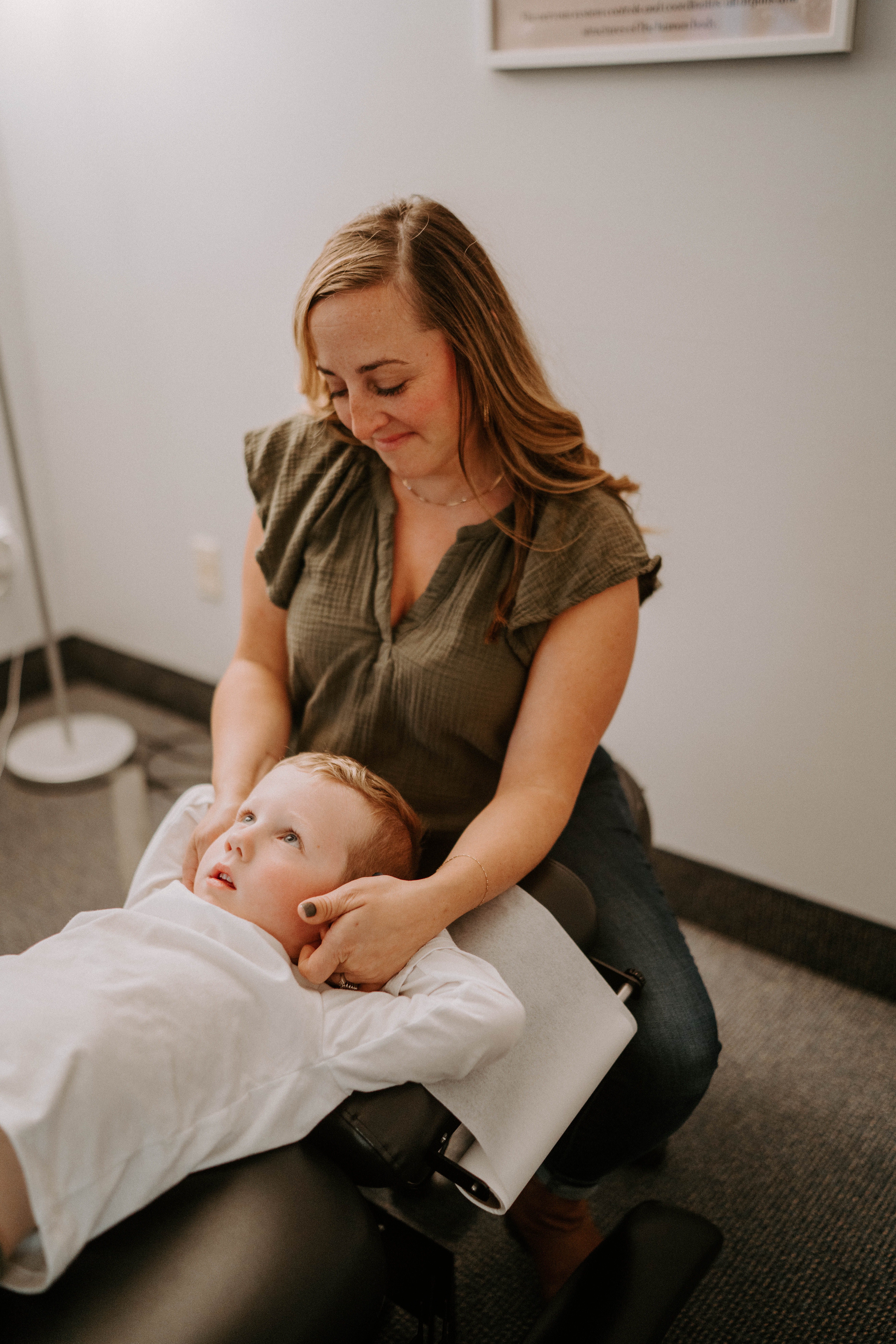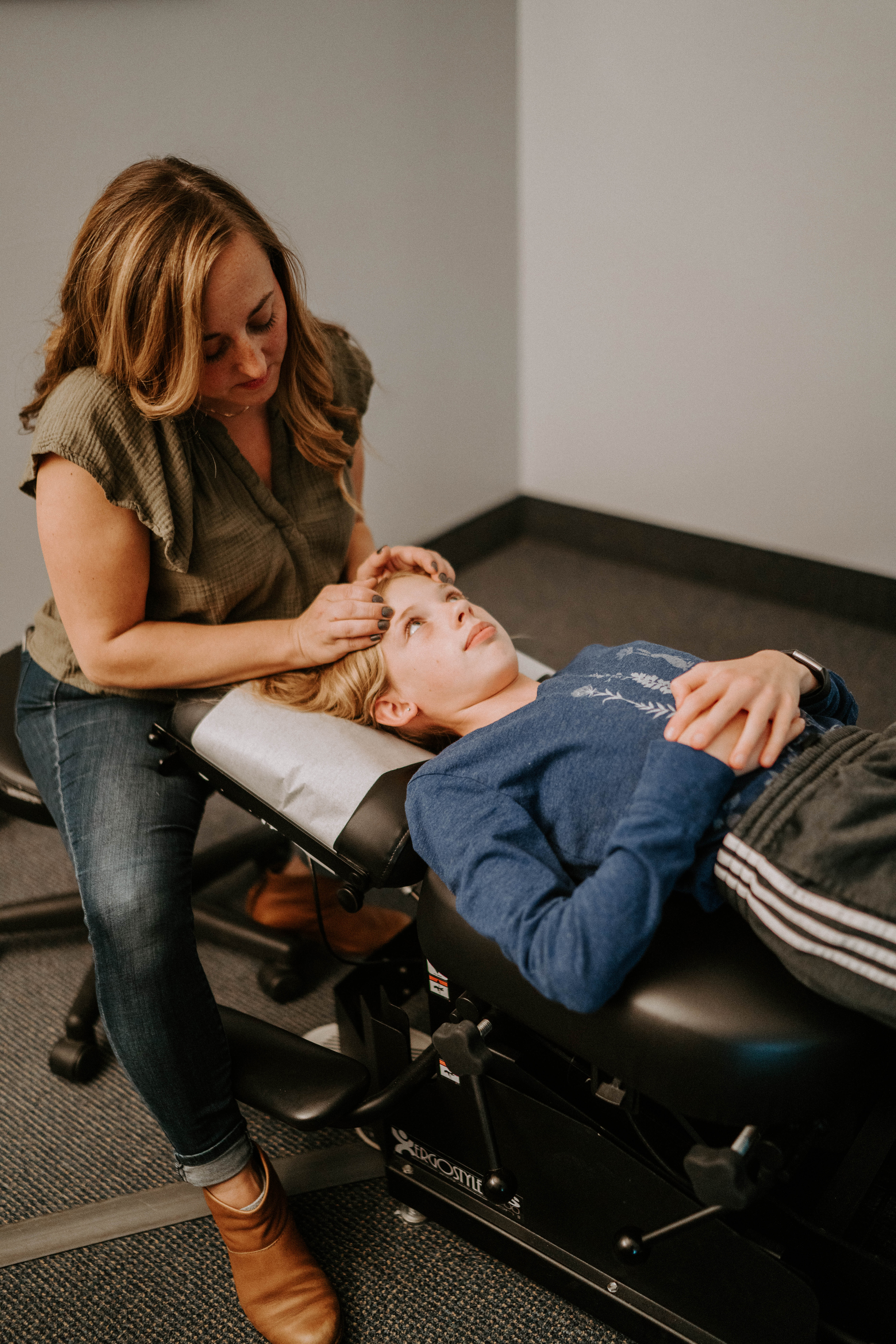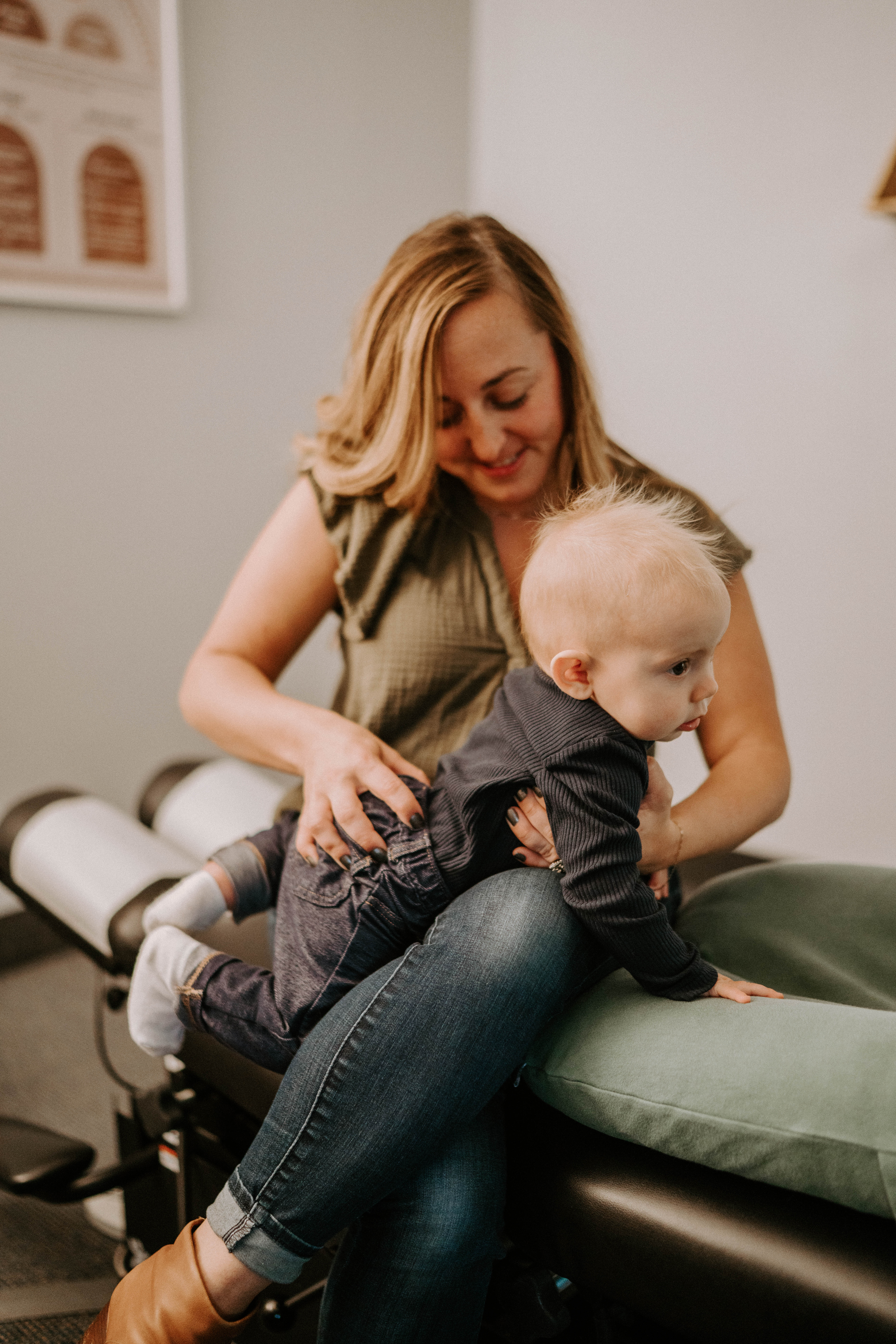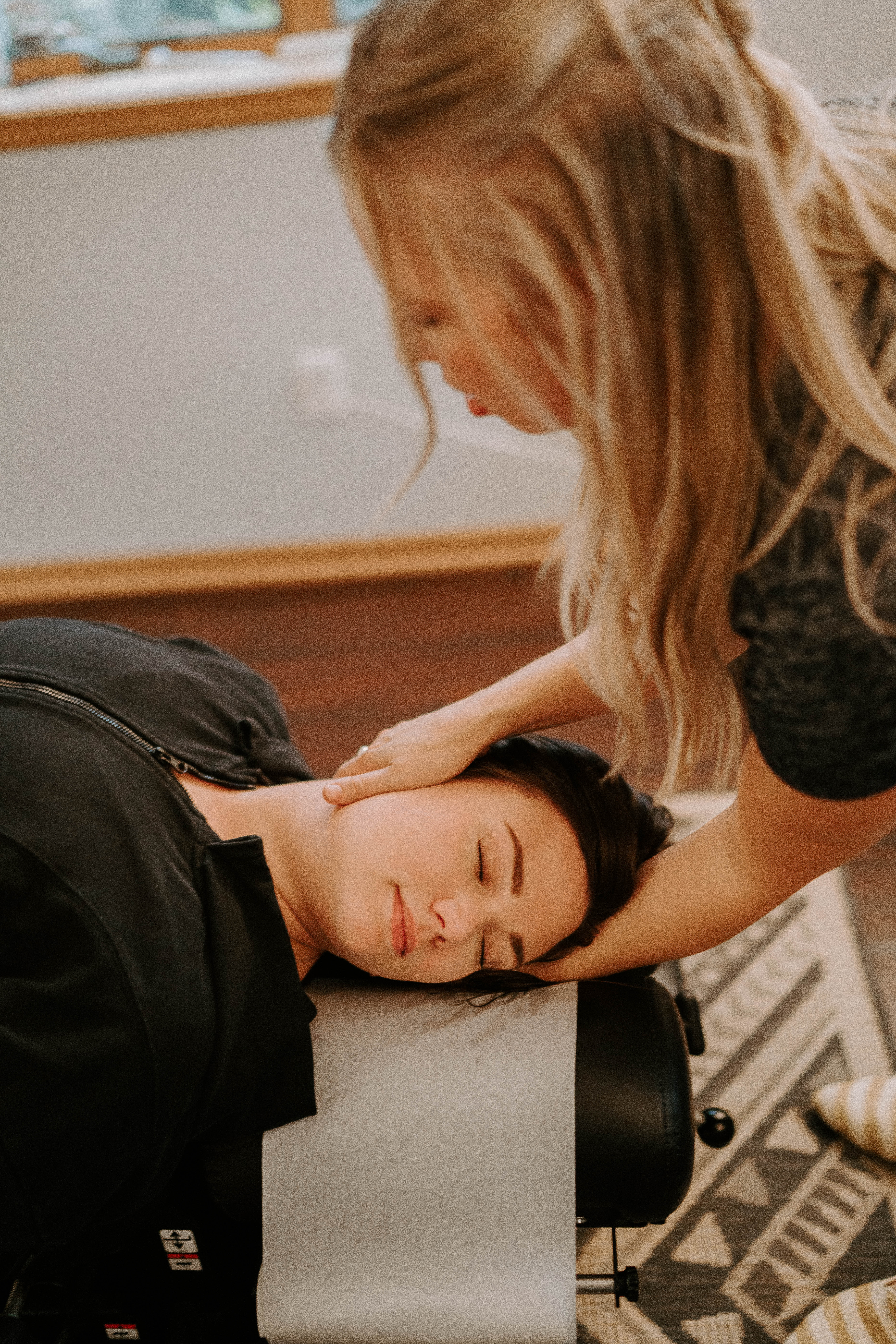WElcome TO
Explore our blog that focuses on holistic care for any and all ages - pediatric well-being, pre/post-natal health, and adult vitality.
THE BLOG

As a parent, you have probably experienced that sinking feeling. Sitting in yet another doctor’s office, watching the clock tick by as you wait with your uncomfortable or distressed child. When the appointment finally happens, it feels rushed. Your concerns are brushed aside, and you leave with another prescription – but no real answers.
You’re not alone in this frustrating journey. Many parents find themselves caught between traditional medicine’s quick-fix approach and the overwhelming world of alternative healthcare (chiropractic care, functional medicine, nutrition, etc.). The question remains: who can truly help your child thrive?
And even if you’re ready to start with chiropractic care and natural health, how do you find and choose the best practice that has the most advanced, effective clinical protocols and patient care process?
One thing that continues to amaze our patients in the best ways is how in-depth, detailed, and complete our clinical process is at Rochester Chiropractic and Wellness. So, if you’ve been looking for an incredible pediatric, perinatal, or family chiropractic office to serve your family at a high level, we are here to help!
A Different Kind of Healthcare Experience
We take pride in the fact that our approach digs deep to find the real causes behind your child’s challenges instead of just masking symptoms with medications. This is exactly why we developed our comprehensive 5-step clinical process.
Let’s break down how this impactful approach works:
1. The Deep-Dive Consultation
Unlike traditional rushed appointments, we begin with a thorough consultation that truly listens to your story. This isn’t just about checking boxes – it’s about understanding your child’s complete health journey. We explore patterns and connections that other healthcare providers might miss, asking questions that help uncover the real root of your child’s challenges. We then also take the time to explain everything, answer your questions, and walk you through exactly how neurologically-focused chiropractic care works.
2. Advanced Technology for Precise Understanding
Our state-of-the-art INSiGHT scanning technology allows us to evaluate the function of your child’s central and autonomic nervous system. These advanced scans identify areas of stress, tension, and dysfunction that might be contributing to their health challenges. They help pinpoint underlying issues such as subluxation, nervous system dysregulation, and dysautonomia. This isn’t just about symptoms – it’s about understanding how your child’s body is actually functioning. Based on the results, our team creates a fully customized care plan aimed at restoring optional nervous system function and improving overall health.
3. Personalized Care Planning
Cookie-cutter approaches don’t work when it comes to your child’s health. Using our exclusive care planning system, we create a fully customized approach based on:
- Your child’s specific health history and challenges
- Their unique INSiGHT scan results
- The duration and severity of their symptoms
4. Comprehensive Results Review
We believe in full transparency and education. During your Report of Findings, we:
- Review all findings in detail
- Clearly explain what’s causing your child’s challenges
- Outline a specific action plan for moving forward
- Take time to answer all your questions
5. Advanced Neurological Care
Our approach to care is as unique as your child. Instead of using a one-size-fits-all technique, we match our methods to your child’s specific needs. Our neurologically-focused adjustments are designed to:
- Release stuck stress and tension
- Address underlying nervous system imbalances (subluxation)
- Stimulate and activate the vagus nerve
- Promote natural healing and nervous system regulation without relying on medications
Your Child Deserves Better
The journey to better health shouldn’t leave you feeling confused, dismissed, or hopeless. Your instincts as a parent matter and your concerns deserve to be heard. At RCW, our comprehensive approach has helped thousands of families find answers and hope when other approaches have failed.
If you’re ready to experience healthcare that truly puts your child first, that takes the time to listen, and that works to address the real root causes of health challenges, we’re here to help. Please reach out to us today to schedule your initial consultation!
Your child deserves more than quick fixes and rushed appointments – they deserve a chance to truly thrive. Let’s work together to help your child achieve their full health potential, naturally and effectively.


If you’re reading this, chances are you’re on a journey that no one prepared you for. Your child might be battling chronic conditions like seizures, insomnia, anxiety, depression, constipation, or autoimmune issues such as PANS or PANDAS. You’re not alone in this struggle, and today, we want to shed light on a condition that might be the missing piece of your child’s health puzzle: dysautonomia.
The Hidden Epidemic
We’re facing an absolute epidemic of chronic health problems among our teenage and young adult population. The rates of anxiety and depression have skyrocketed, and the sheer number of teens struggling with poor gut health, autoimmune conditions, and even seizures is staggering. As a parent, watching your child struggle with these issues can be overwhelming and leave you feeling helpless.
Traditional medicine often falls short, offering little more than a cocktail of medications to mask symptoms. Many of the teens and young adults we meet are on 3, 4, 5, or even 6 different medications, dealing with side effects that make them feel even worse. The truth is, these medications don’t address the root cause of their health issues.
Connecting the Dots: Dysautonomia
What if we told you that there’s a common thread tying these seemingly unrelated conditions together? It’s called dysautonomia – a dysfunction and imbalance in the autonomic nervous system. Understanding dysautonomia could be the key to unlocking your child’s path to better health and improved quality of life.
What is Dysautonomia?
The autonomic nervous system (ANS) controls all of our body’s automatic functions, like heart rate, blood pressure, digestion, and temperature regulation. It’s made up of two main branches:
- The sympathetic nervous system (our “fight or flight” response)
- The parasympathetic nervous system (our “rest and digest” mode)
These two systems were created to work together seamlessly to maintain balance. However, in dysautonomia, this delicate balance is disrupted, leading to a wide range of symptoms that can affect nearly every body system.
The Two Main Problems of Dysautonomia
- Sympathetic Overdrive: The “fight or flight” system gets stuck in the “on” position.
- Parasympathetic Suppression: The “rest, relax, and regulate” side of the nervous system gets suppressed and shut down.
Because the ANS controls so many major physiological systems and functions in the body, problems start to show up all over, often in a specific sequence:
- Sleep: Difficulty falling asleep and staying asleep, leading to fatigue, exhaustion, and brain fog.
- Digestion: The gut and digestive system require a lot of energy and focus from the nervous system. When stuck in “fight or flight” mode, the body diverts energy away from digestion, leading to various gut issues.
- Immune function and inflammation: A chronic state of stress leaves the body in a constant state of inflammation and suppressed immune function.
- Brain health: When dysautonomia is in full effect, mental, emotional, behavioral, and cognitive capacities are significantly affected.
The “Perfect Storm”: Understanding the Origins of Dysautonomia
Dysautonomia doesn’t develop overnight. It’s often the result of a “Perfect Storm” of factors that can include:
- Prenatal stress
- Birth stress or interventions
- Early childhood stressors
- Environmental toxins
- Poor nutrition
- Chronic infections
Recognizing these factors can help us understand why your child might be experiencing these challenges and guide us in creating a comprehensive healing approach.
Taking Charge of Your Child’s Health
As a parent, you have more power than you might realize to help your child overcome these challenges. Here are some steps you can take:
- Recognize the Signs: Be aware of the symptoms of dysautonomia and how they might manifest in your child. Look for patterns in sleep disturbances, digestive issues, anxiety, and other seemingly unrelated symptoms.
- Seek Proper Care: Traditional medical tests often miss dysautonomia. There is no valid medical testing for dysautonomia, just as there’s no test for the supposed “chemical imbalance” theory behind conditions like ADHD, anxiety, and depression. This is why conventional medicine often misses it 99% of the time. Look for healthcare providers who use Neurological INSiGHT Scans, specifically Heart Rate Variability (HRV) testing. These scans can detect patterns and evidence of dysautonomia and nervous system dysregulation.
- Explore Holistic Approaches: Consider Neurologically-Focused Chiropractic Care, which addresses the root cause of dysautonomia and helps balance the nervous system. This approach has shown remarkable results in helping teens and young adults regain their health and vitality.
- Support Your Child’s Nervous System: Implement stress-reduction techniques, ensure proper nutrition, and create a sleep-friendly environment. Remember, every positive step helps in rebalancing the autonomic nervous system.
- Be Patient and Persistent: Healing takes time. Celebrate small victories and keep moving forward. Your child’s nervous system has likely been out of balance for some time, so be patient as it learns to function optimally again.
- Educate Yourself: The more you understand about dysautonomia and the autonomic nervous system, the better equipped you’ll be to support your child’s healing journey.
Hope for the Future
Parents, don’t let dysautonomia and chronic health challenges hold your child and family back any longer. Thousands of parents and patients every single day are finding hope, answers, and drug-free action steps with Neurologically-Focused Chiropractic Care.
At RCW, our incredible care starts with a consultation and case history, where we ask questions and dive deeper than any doctor ever has to find the real root cause of your teen’s chronic health challenges. Then, we run the INSiGHT Scans to test for dysautonomia, nervous system dysregulation, and more – a process that takes just 15-20 minutes but can absolutely transform your understanding of what’s really going on with your child’s health struggles.
After gathering this vital information, we sit down knee-to-knee at our report of findings visit, show you the scan findings, explain everything, and go over your child’s customized care plan. This comprehensive approach ensures that we’re not just treating symptoms, but addressing the root cause of your child’s health challenges. So please don’t wait, reach out to us today!
Remember, you are your child’s best advocate. By understanding dysautonomia and taking proactive steps, you can help your child not just survive, but thrive!


As a parent, you’ve likely experienced those frustrating moments when it seems like your child catches every bug that goes around. You might have tried everything from strict hand-washing routines to countless supplements, only to find yourself back at square one with another illness. But what if we told you that the key to unlocking your child’s immune health might not be in yet another supplement or medication but in a nerve you may not have heard of? Let’s explore the vagus nerve and how it could be the game-changer in your child’s health journey.
The Vagus Nerve: Your Child’s Hidden Health Superhighway
Imagine a superhighway running through your child’s body, connecting their brain to almost every major organ. That’s the vagus nerve – often called the “wandering nerve” because of how extensively it travels. This incredible nerve plays a crucial role in regulating your child’s immune system, acting as a sophisticated communication channel between the brain and the body.
When the vagus nerve is functioning optimally, it helps maintain what we call the “inflammatory reflex.” It helps ensure that your child’s immune system responds appropriately to threats without going overboard. It’s like having a perfect balance of alertness and calm in their body.
The Science Behind the Vagus Nerve and Immune Function
Let’s break down how this works:
- Detection: When your child’s body encounters a potential threat (like a virus or bacteria), sensory fibers in the vagus nerve detect this and send signals to the brain.
- Processing: The brain processes this information and determines the appropriate response.
- Response: The brain then sends signals back through the vagus nerve to control inflammation and immune response.
- Balance: This back-and-forth communication helps ensure that the immune response is neither too weak (leaving your child vulnerable to infections) nor too strong (potentially leading to issues like allergies or autoimmune conditions).
A well-functioning vagus nerve can lead to:
- Fewer illnesses and quicker recovery times
- Reduced allergic reactions and asthma symptoms
- Better digestion and gut health (remember, a large portion of the immune system is in the gut!)
- Improved mood and behavior
- Enhanced overall resilience and stress response
- Better sleep quality
- Reduced inflammation throughout the body
Isn’t it exciting to think that supporting this one nerve could have such wide-reaching effects on your child’s health?
What Can Disrupt Vagus Nerve Function?
Understanding what can interfere with vagus nerve function is crucial. Some common factors include:
- Birth stress: Even a seemingly uncomplicated birth can sometimes cause misalignments that affect nerve function.
- Chronic stress: Our modern, fast-paced lifestyles can take a toll on the nervous system, even in children.
- Poor posture: In our digital age, many children spend hours hunched over devices, which can impact nerve pathways.
- Nutritional deficiencies: The nerve needs proper nutrition to function optimally.
- Environmental toxins: Exposure to certain chemicals or pollutants can affect nervous system function.
A Natural Approach to Your Child’s Health
By focusing on supporting the vagus nerve, we’re not just treating symptoms – we’re enhancing your child’s overall health from the inside out. This approach can lead to improvements not just in immune function but in areas like sleep, digestion, and even mood and behavior.
Imagine a future where your child isn’t constantly battling illnesses, where allergies are less severe, and where their body is better equipped to handle whatever comes their way. That’s the potential of a well-functioning vagus nerve.
Taking the Next Step
As parents, we all want the best for our children. By focusing on the vagus nerve – this incredible “wandering nerve” – we have the opportunity to support our children’s health in a profound and drug-free way. It’s not about quick fixes or masking symptoms; it’s about nurturing our children’s innate ability to heal and thrive.
For next steps and to schedule a consultation, please reach out to RCW today!
Here’s to unlocking your child’s true health potential and watching them flourish in ways you might never have imagined!







